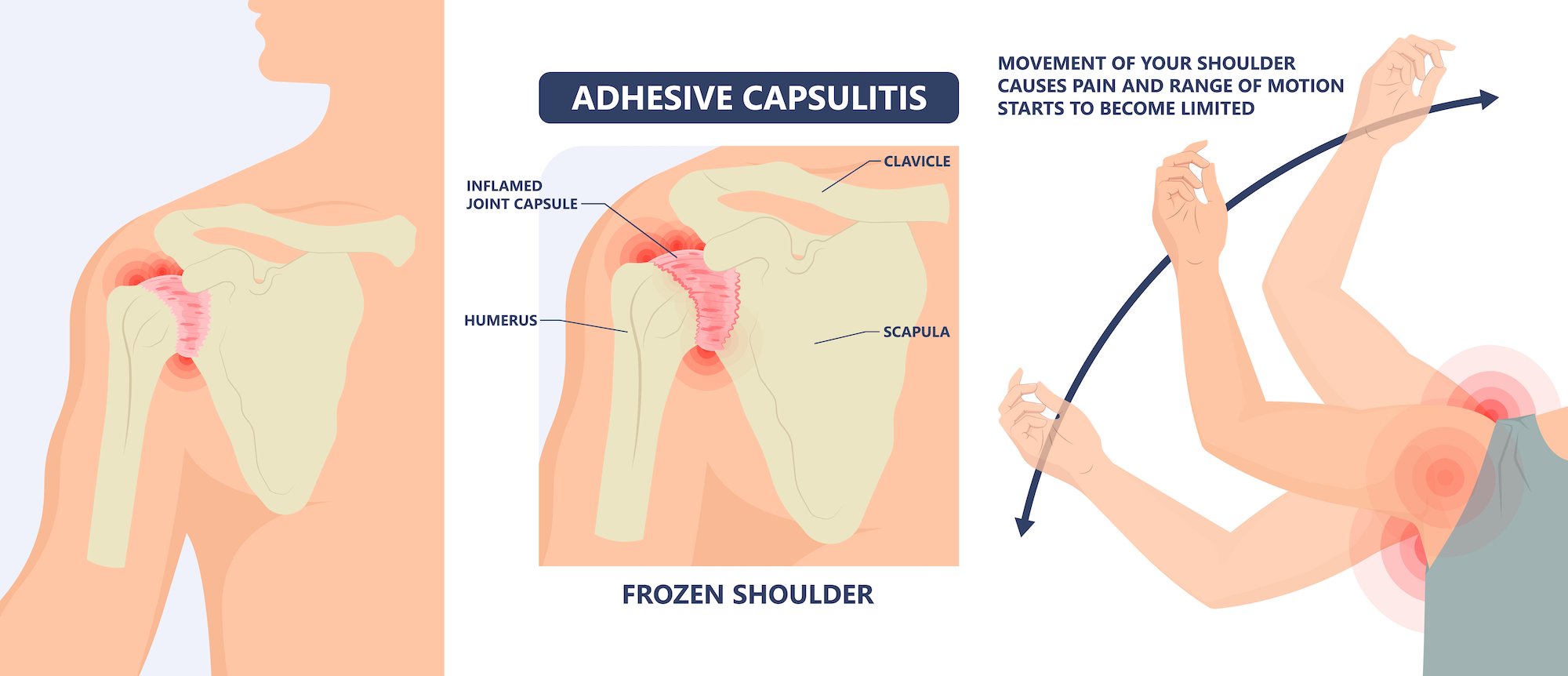In a Bind: What to Know About Frozen Shoulder and How to Get Unstuck
The image highlights the constricted space within the shoulder joint, indicating the restricted range of motion caused by adhesive capsulitis
Frozen shoulder, also known as adhesive capsulitis (AC), is a condition that affects the shoulder joint, causing pain and stiffness. It is caused by the thickening and tightening of the capsule that surrounds the shoulder joint.
The exact cause of this condition remains uncertain. However, it is more commonly observed in individuals who have kept their shoulder immobile for an extended period, such as following surgery or due to an arm fracture. There are also several other factors that can increase your risk of developing this condition such as;
Age - more common if you are 40+
Gender - more common in females
Having diabetes
Shoulder immobilisation or overuse
Understanding the Three Phases of Frozen Shoulder
Phase one includes shoulder pain worsening with movement and at night. As the pain increases so does the loss of motion. This usually lasts 2 - 9 months.
During phase two, the arm may be easier to move, but the range of motion is limited – close to 50 percent less than the other arm. This phase may last 4 to 12 months.
The third stage is where things may start to improve. Over a 12 to 24-month period, you may experience a gradual improvement in the mobility of the shoulder. However, treatment is usually necessary to achieve proper range of motion.
With the right treatment plan and early intervention you can work to relieve pain and restore range of motion to the affected shoulder joint. Most patients will have significant improvement in 12-16 weeks. Recovery time varies depending on the severity of the condition, age, and overall health of the patient.
Treatment options may include:
Medications - prescription or over the counter anti-inflammatory and pain-relief medication
Rehabilitation - a combination of exercises, stretches, and physical therapy to not only restore range of motion, but to prevent the recurrence of the condition
Steroid injections - injections of corticosteroid into the shoulder to reduce inflammation and release the capsule or tight tissues
Surgery - usually a last resort for treatment. Patients can experience significant improvement in regaining their normal or nearly normal range of motion through this approach. The effectiveness of the treatment largely depends on the patients' commitment to actively participate in physical therapy and fulfil their responsibilities in the process.
Frozen shoulder is a common condition that can cause pain and discomfort. It is important to get a proper diagnosis and treatment from your healthcare provider to ensure a full recovery. With the correct treatment and rehabilitation, individuals with frozen shoulder can regain their shoulder function and live a pain-free life.
Experience relief and effective treatment for frozen shoulder with our skilled osteopaths. Book your appointment today and let us help you on your journey to recovery!
Frozen shoulder – diagnosis and treatment. (2021, November 10). Colorado Sports Doctor.https://coloradosportsdoctor.com/frozen-shoulder-diagnosis-and-treatment/
Hannafin, Jo A. MD, PhD*; Chiaia, Theresa A. PT**. Adhesive Capsulitis: A Treatment Approach. Clinical Orthopaedics and Related Research 372():p 95-109, March 2000.

